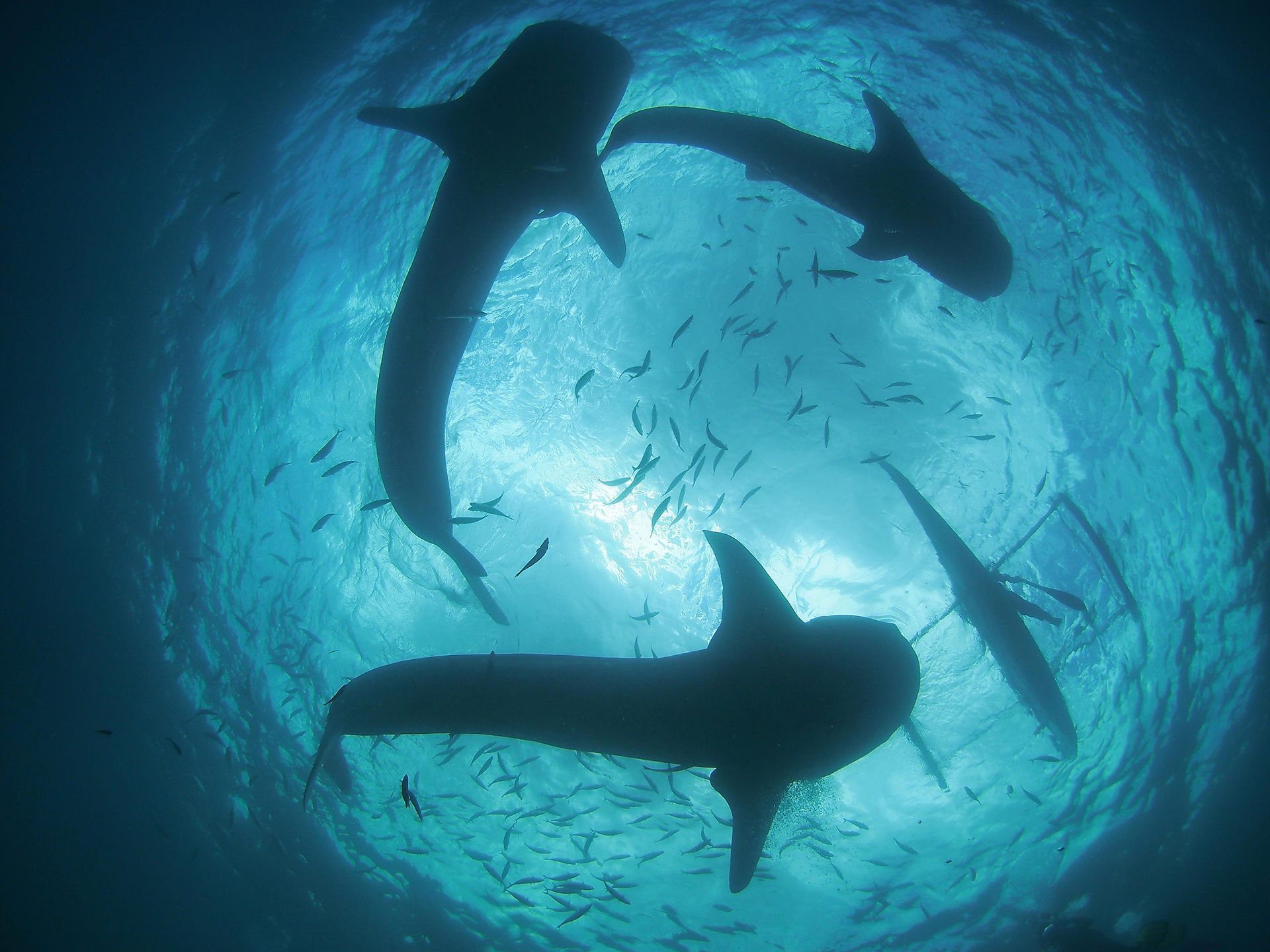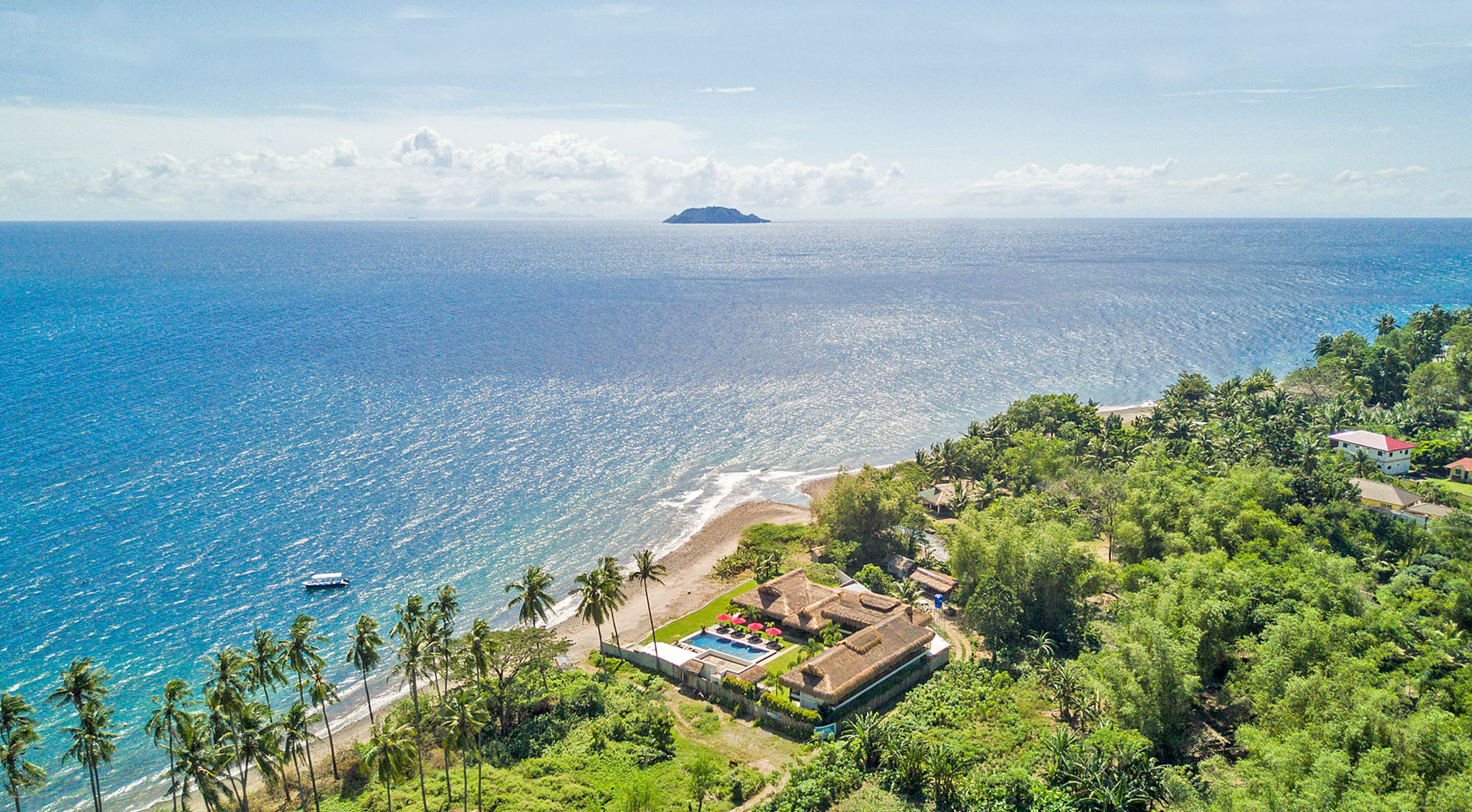
Up Close with the World's Biggest Fish
Imagine swimming with the biggest fish in the ocean. And for even more bragging rights, you can tell everyone that it was a shark. In the waters of the Philippines, whales sharks the size of buses congregate in shallow water, giving snorkelers and swimmers a rare chance for sure-thing encounters that are both safe and easy. Waters are calm and boat rides are quick and comfortable. There's no danger of being swallowed whole, as these gentle giants feed on the tiniest creatures in the sea, and pay scant attention to humans as they glide past at a leisurely pace that most swimmers can match.
Highlights
- Best for: Solos, couples and budget to luxury
- Best season to visit: Year round, with coolest and driest temperatures from Dec through June
- Weather: The Philippines is usually hot and humid. There are three seasons: tag-init or tag-araw, the hot dry season or summer from Mar - May; tag-ulan, the rainy season from June - Nov; and tag-lamig, the cool, dry season from Dec - Feb
Philippines Information
Animal Interactions in the Philippines Overview
Whale shark swims take place near the southern tip of the island of Cebu, in the central Philippines. Waters are typically calm and quite clear, and encounters begin with a short boat ride from shore. Sightings are almost guaranteed throughout the year.
Animal Interactions in the Philippines Tips
Whale sharks are a protected species in the Philippines. It's possible to get quite close to the sharks, but you should not attempt to touch the animals. If you are taking pictures, turn the flash off, because the water is bright enough for natural light photography, and flashes may disturb the animals.
Best Places for Animal Interactions in the Philippines
There's a random chance of seeing whale sharks in many areas of the Philippines, but it is the Oslob region of Cebu Island where encounters are all but guaranteed, and conditions are ideal for comfortable swimming and snorkeling.
What to Pack for Animal Interactions in the Philippines
Marks, snorkel and fins, and a light wetsuit or water shirt for both sun protection on the surface, and streamlining when swimming. Bring a lanyard or float for your camera in case it slips from your grasp during the excitement of an encounter.
Resorts

Philippines
Azure Dive Resort
See Packages & Learn More

Philippines
Magic Oceans Dive Resort
See Packages & Learn More
Passport and/or Visa Requirements
Entry Requirements: All U.S. citizens are required to have a valid passport. Your passport must contain at least one blank page for entry stamp and proof of onward or return airline ticket may be required. Visas upon arrival are issued for 30 days for tourist stays.
Exit Requirements: All persons leaving the Philippines pay a Government Departure Tax of approximately USD $17.
Immunizations
There are no required vaccines for entry into the Philippines, although you should always check with your doctor and the Centers for Disease Control on recommended vaccinations for travel at cdc.gov.
Culture and Customs
The Philippines are a blend of East and West. Centuries of Spanish and US influences mix with Asian cultural traditions and cuisines. Sophisticated urban centers such as Manila contrast with village life in small fishing communities and mountain settlements. Music is a common love that unites Philippine people of all ethnicities and cultural backgrounds, whether the performance takes the form of a spirited karaoke rendition of a pop favorite or a traditional rondalla. It is a culture where people are quick to sing, laugh easily, and place high values on family, friendships and hospitality. Clear waters and spectacular beaches attract vacationers to coastal resorts, while adventure-minded travelers have a wide range of activities to choose from. Nature lovers can trek, bike or bird in one of the world's most diverse biospheres, home to nearly 80 percent of the world’s plant and animal species. Though better known for its beaches, the Philippines is also a land of towering mountains, with peaks rising to heights of more than 9,000 feet. In addition to trekking and climbing, the highlands provide thrilling whitewater rafting and paddles through underground rivers. Indigenous wellness traditions live on in healing arts such as Hilot touch therapy and Dagdagay foot massage and in the traditional greeting of “Mabuhay,” which is a wish for good health, peace, and harmony.
Electricity, Phone and Internet Access
Electricity in the Philippines is 220 volts, 60 Hz, so an adapter will be needed for U.S. visitors. If your electronic device does not accept 220 V input, you may also need a step down transformer.
The country code for the Philippines is 63. Check with your cell phone provider for International plans which may include text, data and voice. Many hotels offer WiFi.
Water Quality
The water is safe to drink at the larger chain hotel and in major cities, which offer purified water, but it is recommended to drink bottled water while in the Philippines.
Language & Currency
The Philippines is the 3rd largest English-speaking country in the world. Tagalog (Filipino) is spoken by nearly 1/3 of the population as a first language and as a second language by the other 2/3 of the population. Filipino is the official language of education, but English is also an official language. The local currency is the Philippine Peso (PHP) but U.S. dollars are accepted in most places. Check the currency rate here.
Time
The Philippines observe Philippines Time or PHT which is 8 hours ahead of Greenwich Mean Time (+8 GMT). The Philippines does not observe daylight savings time.
Location, Size and Population
The Philippines are located in Southeast Asia, in the Western Pacific Ocean, east of Vietnam and northeast of Malaysia. The Philippines are made up of 7,107 islands. The three main islands are Luzon in the north, the Visayas in the Central Region and Mindanao in the South. The capital city of the Philippines is Manila. The islands take up approximately 115,830 square miles. The islands vary in size with Luzon being the largest at 42,458 square miles, it is also the 15th largest island in the world and the 4th most populated island in the world, to some of the smaller places like popular Dumaguete, which is only around 13 square miles and located in the Visayas.
The population of the Philippines is over 102 Million (2016).